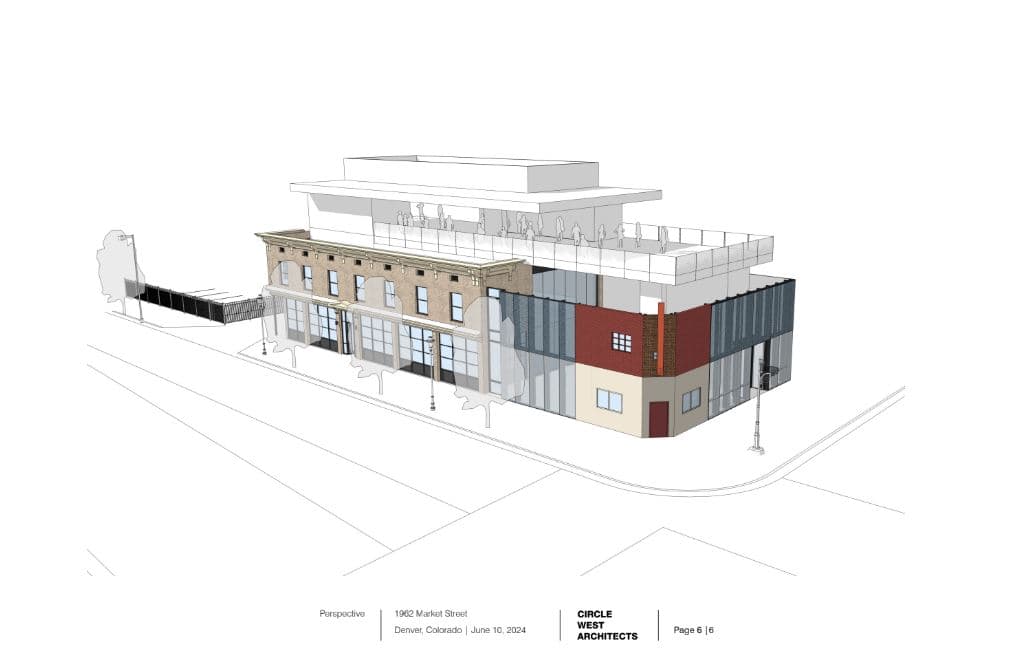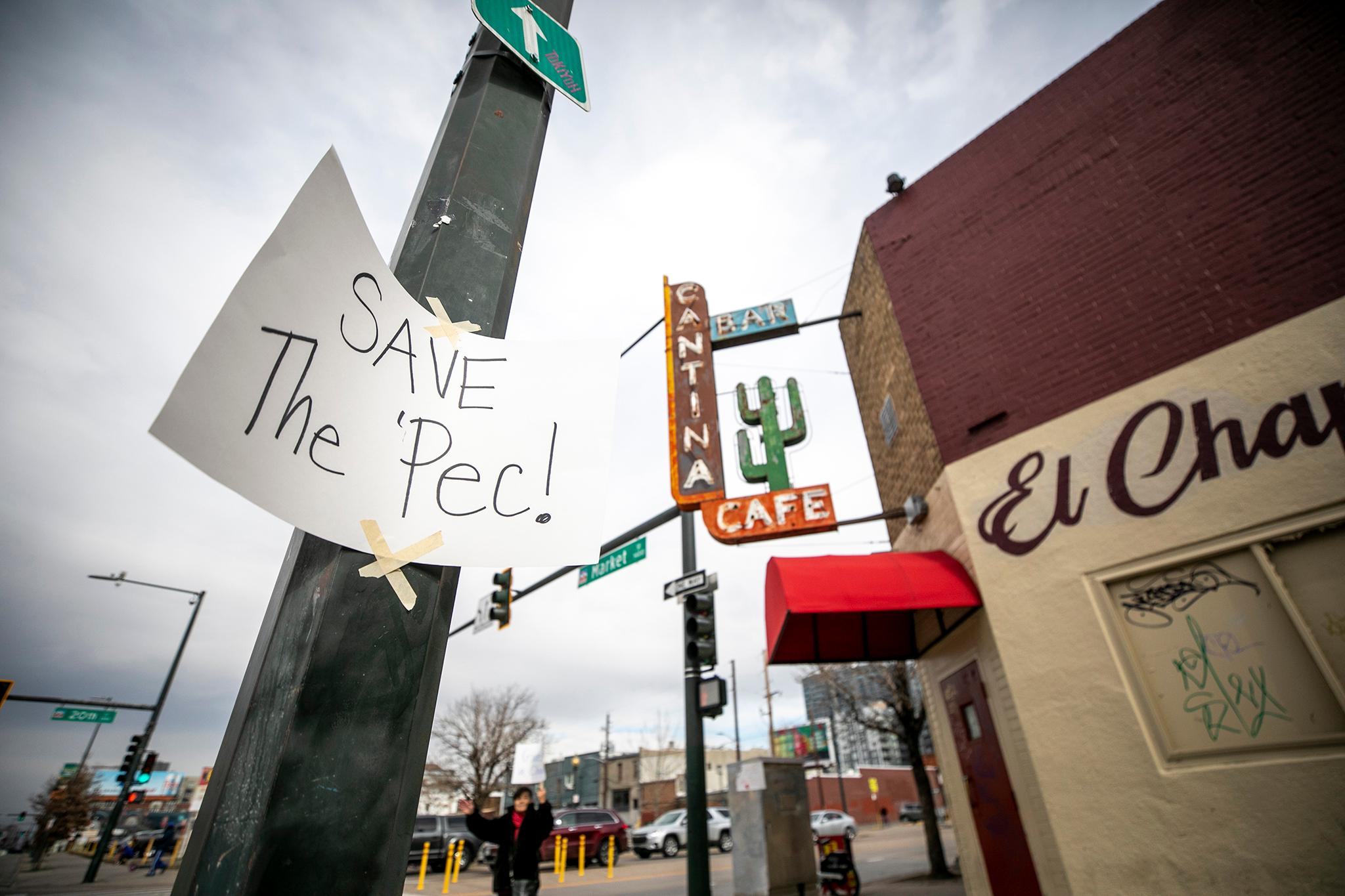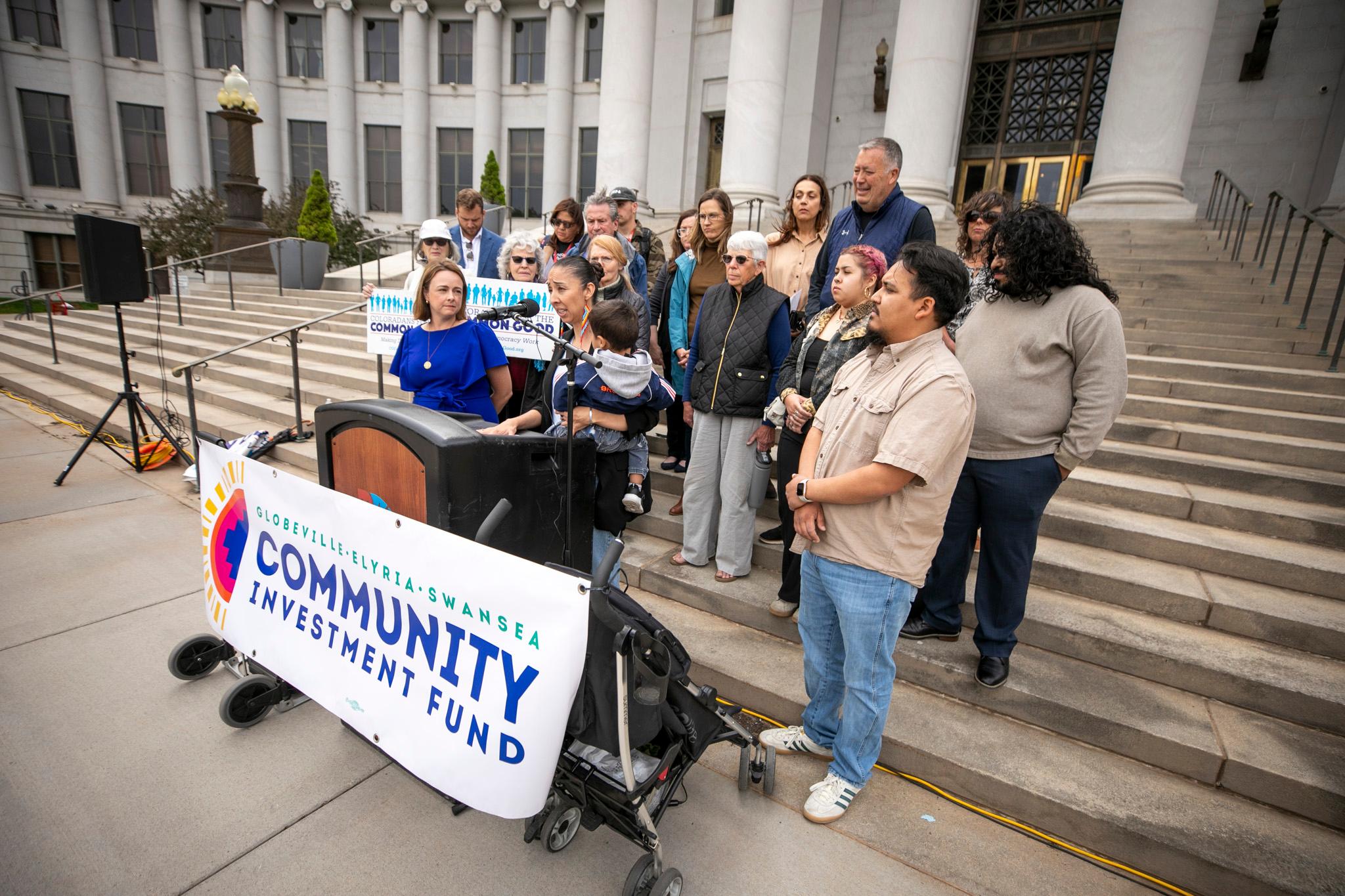Historic Denver and Monfort Companies announced Tuesday that after two months of warring over the future of the building that once housed the legendary jazz club El Chapultepec, they have come up with a mutually agreeable future for 1962 Market St.
Monfort Companies purchased the building in 2022 with the intention of renovating it, as the developer has with other buildings on the block.
But once they "got under the hood," Kenneth Monfort, executive vice president, said the company realized it was beyond saving.
So the developer initially proposed a building that would have required the demolition of the old brick El Chapultepec structure in its entirety.

Historic Denver took umbrage and filed an application for Landmark Designation.
For weeks, Monfort Companies made the case that the building was too structurally unsound to keep, going so far as to bring an engineer in to tour journalists through the building to prove the company's case.
Meanwhile, residents protested Monfort's plans.
Preservationists rallied in front of the building with signs like "Save the Pec," "Give Pec a Chance" and "Stop Erasing Our City."

So the company spoke with residents, Historic Denver and others who wanted to see more of El Chapultepec's legacy in the new development, and the talks proved productive.
Finally, the company came up with a design that Monfort believes will be "award-winning" and receive "national recognition."
The new plans for the El Chapultepec building preserve the brick corner, two signs and a canopy
In a joint interview on Tuesday, Historic Denver announced it would be pulling its application for preservation, while Monfort Companies announced it would be submitting new plans for the El Chapultepec building that would include salvaging the brick corner, two iconic signs and a canopy.
One of the concerns local businesses had about the current structure is that it left too much of the surrounding streets obscured, and they wanted a clearer of line of site. To meet that need, the new building, if created, will include glass walls beyond the brick corner facade.
While some of the specifics of the new building are still being hammered out, the company has released a rendering from Circle West Architects.

Monfort hopes the building will break ground in roughly eight months.
"I wouldn't really call this a compromise," said John Deffenbaugh, CEO of Historic Denver. "I call this a win-win solution. This is a very specific solution to a very specific challenge. On this particular corner, we had a very culturally significant building, but it was also in a poor state to repair."
More collaboration between preservationists and developers in the future?
Deffenbaugh said this process has been a model for how preservationists and developers can work together to come up with suitable outcomes.
Historic Denver never prefers to file for a Landmark Designation, he said, and would rather be brought into conversations with developers earlier.
"I hope we set an example that means that this situation doesn't need to be replicated as many times in the future as it otherwise might have been," he said.
Monfort, who estimates his company could spend up to $2 million extra on the new solution, agreed that if his company had brought more community members to the table earlier on, the development process would have been shortened and the fight between Monfort Companies and Historic Denver wouldn't have had to happen.

"As developers, we have a tendency to work with our consultants that we've always worked with," Monfort said. "Inviting additional voices to the table for discussion to ideate sooner I think would certainly shorten the learning curve, or the process to kind of yield the outcome that that we've achieved today."
Deffenbaugh also hopes the city and developers learn that buildings aren't just historic if they have been designated so. Buildings tell stories, and he hopes that developers and preservationists can work together, more often, to ensure those stories aren't erased.
"I think that good things happen when people talk to each other," Deffenbaugh said. "Conversation generates good outcomes." And also, you know, collectively as a city, moving beyond the statement that if a building is not historically designated, it's not historic."











